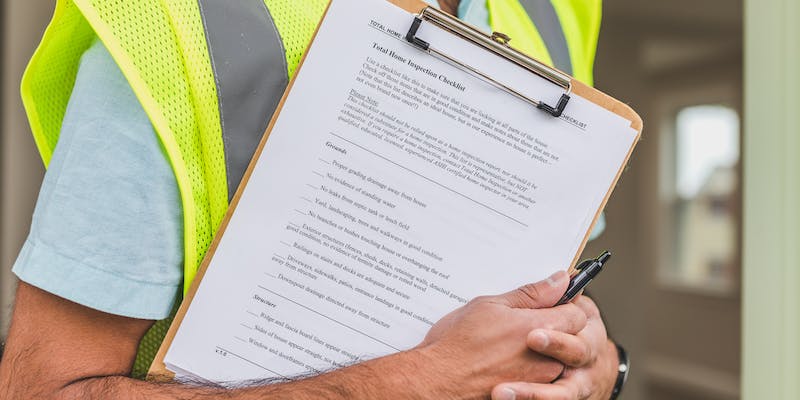Exploring the Common Ways to Move Expense Claims for Returning to School
Sep 01, 2024 By Rick Novak
Moving to a new location for educational purposes can be an exciting but financially challenging endeavor. Whether you're pursuing a degree or certification or upgrading your skills, understanding if and how you can claim moving expenses is crucial.
In this article, we'll delve into the nuances of claiming moving expenses when going back to school, helping you navigate this aspect of your educational journey effectively.
Can You Claim Moving Expenses?
When it comes to moving expenses, the rules can vary depending on your situation. Generally, moving expenses are tax-deductible if your move meets certain criteria set by the IRS (Internal Revenue Service).

These criteria often include the distance and time requirements related to your move. However, claiming moving expenses specifically for educational purposes involves additional considerations.
Eligibility Criteria for Claiming Moving Expenses
To claim moving expenses related to going back to school, you typically need to satisfy the following conditions:
Distance Test
The IRS requires that the distance between your old home and the new location of your school must be greater than the distance between your old home and your old job location. Specifically, this distance is usually at least 50 miles farther from your former residence than your old job location.
This criterion ensures that your move is primarily for educational purposes rather than mere convenience. If you did not have a previous job, the distance between your new home and your former home must be at least 50 miles.
Time Test
In addition to the distance requirement, you must also meet a time test. This test mandates that you work full-time in the vicinity of your new school for a minimum of 39 weeks during the first twelve months after your move.
The work does not have to be for the same employer, but it must be in the same general location where your new school is situated. This period helps establish that your move was indeed for educational purposes and that you intended to stay in the area for an extended period to pursue your education.
Types of Moving Expenses You Can Claim
If you meet the eligibility criteria, you can generally deduct the following types of moving expenses related to going back to school:
Transportation and Travel Costs
This category includes expenses for transporting yourself and your household goods to your new location. Deductible expenses may include the cost of hiring movers, renting a moving truck, or using your own vehicle for the move. Additionally, travel expenses for yourself and your family members to the new location, such as airfare, train tickets, or mileage if driving, can also be claimed.
Storage Costs
If you need to store your household goods and personal effects temporarily while transitioning to your new location for school, storage expenses may qualify as deductible moving expenses.
Utility Connection/Disconnection Fees
Fees associated with connecting or disconnecting utilities at your old or new residence due to the move are eligible for deduction. These fees may include charges for services like electricity, water, gas, internet, and phone connections.
Packing and Shipping Costs
Expenses incurred for packing, crating, and shipping your household goods and effects to your new location are deductible. This can encompass costs for packing materials, moving boxes, and shipping services used to transport your belongings safely to your new residence near your school.
Common Mistakes to Avoid
When claiming moving expenses for going back to school, it's important to steer clear of these common pitfalls to ensure your deductions are valid and maximize your tax benefits:
Not Meeting Distance or Time Tests
One of the primary reasons moving expense deductions get denied is failing to meet the IRS's distance and time tests. Remember, the distance between your old home and your new school location must be significantly greater than the distance between your old home and your old job location.
Additionally, you must work full-time in the vicinity of your new school for at least 39 weeks during the first 12 months after your move. Failing to meet these criteria can disqualify your claim for moving expenses.
Exceeding the Deductible Amount
While moving expenses are generally deductible, they are subject to certain limits and caps. It's essential to understand these limits to avoid overestimating your deductible amount and potentially facing complications during tax filing. Keep track of your eligible expenses and ensure they fall within the IRS's guidelines to maximize your tax savings without exceeding the allowable deductions.

Incorrectly Categorizing Expenses
Properly categorizing your moving expenses is crucial for accurate tax reporting. Each expense must align with IRS guidelines to qualify for deduction. For instance, expenses related to meals, sightseeing during the move, or non-essential services are typically not deductible.
Ensure you maintain clear records and receipts that distinguish between personal and deductible moving expenses. This practice not only supports your claim but also simplifies the taxation filing process and reduces the risk of IRS scrutiny.
Conclusion
Claiming moving expenses when going back to school can alleviate some of the financial burden associated with relocation for educational purposes. By understanding the eligibility criteria, types of deductible expenses, and necessary documentation, you can maximize your tax benefits while focusing on your academic or career advancement. Remember to consult with a tax advisor or accountant to ensure compliance with IRS regulations and optimize your financial planning during this transitional period.
Whether you're embarking on a new academic journey or enhancing your professional skills, knowing your options for claiming moving expenses can contribute to a smoother and more financially secure educational experience. Take advantage of available deductions and plan your move strategically to make the most of this tax benefit.
On this page
Can You Claim Moving Expenses? Eligibility Criteria for Claiming Moving Expenses Distance Test Time Test Types of Moving Expenses You Can Claim Transportation and Travel Costs Storage Costs Utility Connection/Disconnection Fees Packing and Shipping Costs Common Mistakes to Avoid Not Meeting Distance or Time Tests Exceeding the Deductible Amount Incorrectly Categorizing Expenses Conclusion
Best Mobile Home Loans

Is My Credit Score Useful Outside the US?

The Basics of Commodity Futures: A Beginner's Guide

10 Easy Post-Account Closure Steps To Secure Your Assets

What Is Total Shareholder Return (TSR)?

High-Value Home Insurance: What is it?

Online Credit Unions: How To Join and How It Works

Debt Forgiveness How Get Out Paying Your Student Loans

What Does the S and P 500 Index Measure and How Is It Calculated?

How to Prevent Foreclosure and Keep Your Home Secure

Lifespan of An Appraisal
